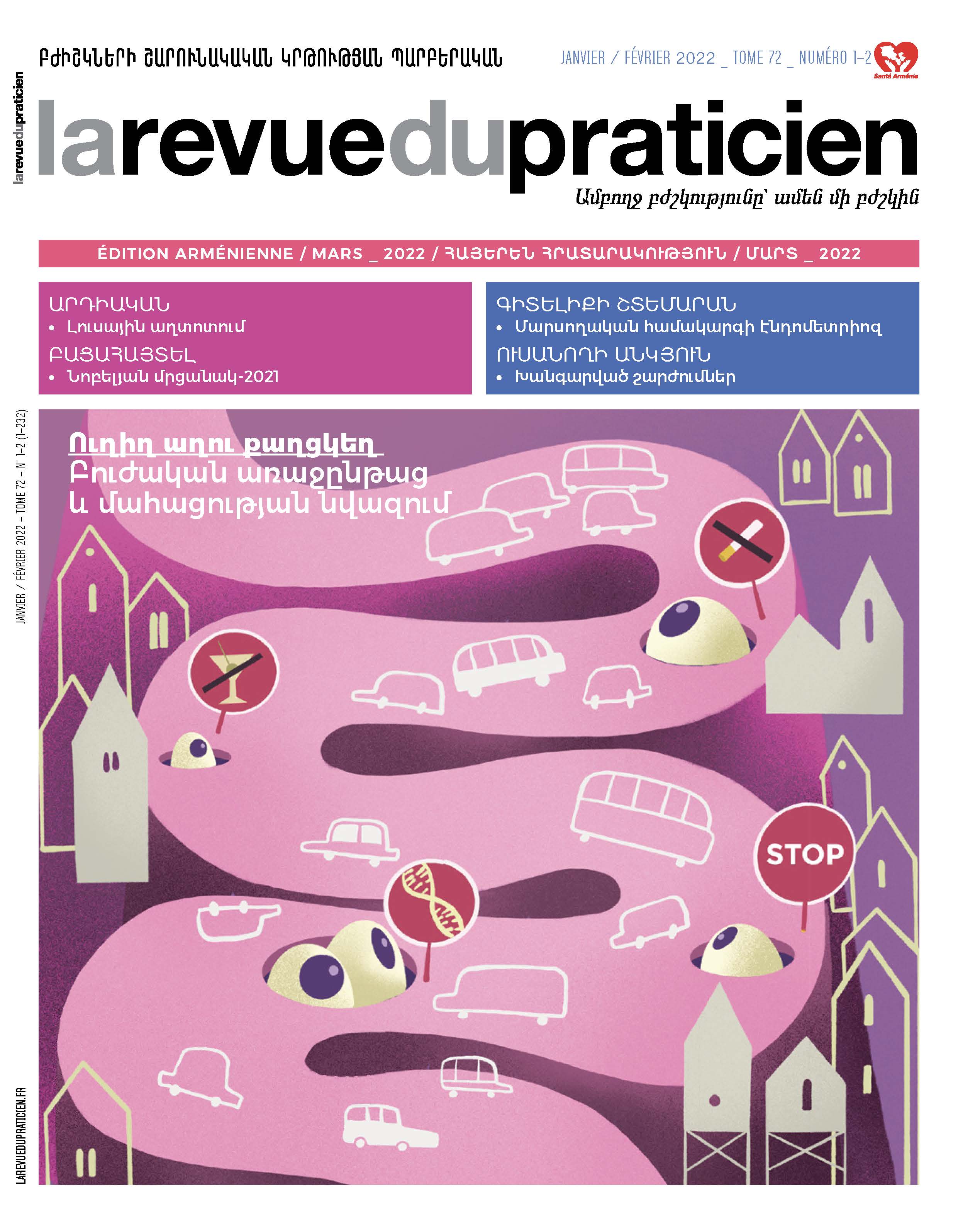Ուղիղ աղու քաղցկեղի համաճարակաբանությունը, ռիսկի գործոնները և սքրինինգային ծրագրի ներկայիս վիճակը 18
Anne-Marie Bouvier, Sylvain Manfredi.Ամփոփագիր
Francim ցանցի՝ քաղցկեղի գրանցամատյանների տվյալները հիվանդացության և ապրելիության վերաբերյալ հնարավորություն են տվել գնահատելու ուղիղ աղու քաղցկեղով ազգային հիվանդացությունը և դրա կանխատեսումը ախտորոշումից հետո 20 տարվա ընթացքում: 2018-ին Ֆրանսիայում ախտորոշվել է ուղիղ աղու քաղցկեղի 13 744 նոր դեպք: Հիվանդացությունը շատ աննշան նվազել է՝ սկսած 1990 թվականից: Տղամարդկանց և կանանց շրջանում հիվանդացության հարաբերակցությունը կանոնավոր կերպով նվազել է ժամանակի ընթացքում՝ 2,1-ից հասնելով 1,8-ի: Ուղիղ աղու քաղցկեղի 47%-ն ախտորոշվել է տեղային տարածման փուլում, 20%-ը՝ մոտակա տարածման փուլում, 34%-ը՝ ուշ փուլում: Ուղիղ աղու քաղցկեղի զարգացման միջին վտանգի ենթակա են 50 տարեկանից բարձր, երկու սեռերին էլ պատկանող անձինք: Հնգամյա զուտ ապրելիությունը տղամարդկանց շրջանում 60% է, կանանց շրջանում՝ 59%: Տասը տարվա կտրվածքով այն կազմել է 54% և 47%, համապատասխանաբար, ախտորոշման պահին 50 և 70 տարեկանների համար: Ախտորոշումից հինգ տարի անց ավելցուկային ռիսկը համարյա չկա: Քաղցկեղի հետ կապված ավելցուկային մահացություն դիտարկվում է հիմնականում ախտորոշումից հետո առաջին տարվա ընթացքում: Ավելցուկային մահացության մակարդակն ախտորոշումից հետո նվազել է մինչև 10 տարի, այնուհետև՝ մնացել կայուն: Կղանքում անզեն աչքով անտեսանելի արյան առկայությունը որոշող իմունաբանական թեստի կիրառությունը Ֆրանսիայում մոտ 30% է, որը զգալիորեն ցածր է սքրինինգային ծրագրի արդյունավետության ապահովման համար անհրաժեշտ 45%-ից:
MeSH.
Aged,
Early Detection of Cancer,
Female,
Humans,
Incidence,
Male,
Mass Screening,
Middle Aged,
Rectal Neoplasms/diagnosis,
Rectal Neoplasms/epidemiology,
Registries,
Risk Factors.
Հիմնաբառեր.
ուղիղ աղու նորագոյացություններ:
